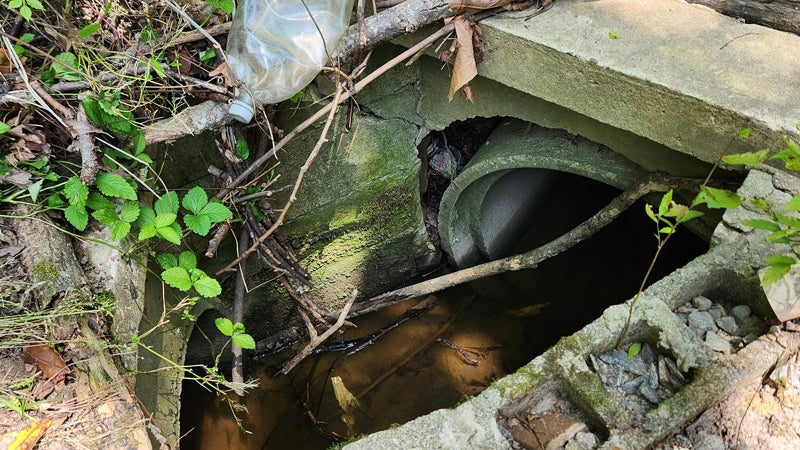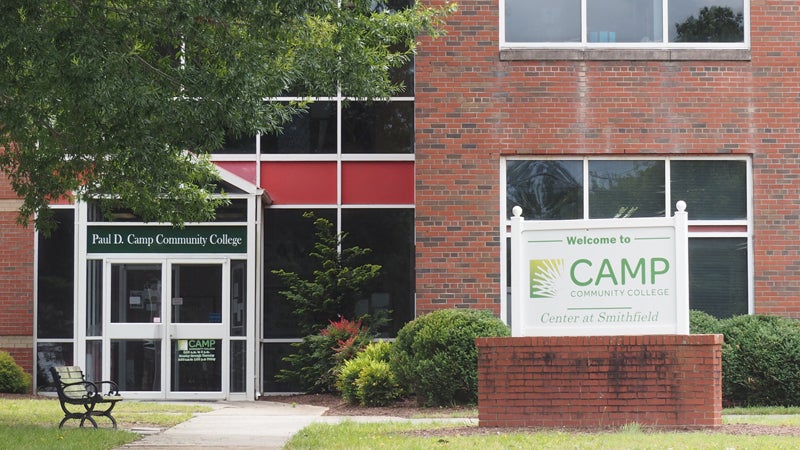Town grant will fund relocation for owners of flood-prone homes
Published 3:04 pm Friday, May 12, 2023
Betty Ricks has lived at the same address since 1984, but not in the same house.
When Hurricane Floyd dumped just over a foot of rain on Smithfield in 1999, the resulting flooding destroyed Ricks’ Quail Street home.
She was able to rebuild with money from the Federal Emergency Management Agency after FEMA declared Isle of Wight County and 42 other Virginia localities affected by Floyd eligible for financial assistance. But her second home suffered the same fate seven years later in a 2006 nor’easter.
That time, she didn’t receive any FEMA funds and had to rely on her insurance and her own money to construct her third and current residence.
Ricks is one of five homeowners recently deemed eligible for a grant-funded program that would allow them to sell their flood-prone houses to the town and move to safer ground.
Smithfield has been awarded a $966,252 grant through FEMA’s Hazard Mitigation Program, intended to fund the cost of relocating the residents and demolishing the homes.
On May 8, Smithfield’s Town Council voted unanimously to commit $92,024 as its required local match to receive the grant. According to Town Manager Michael Stallings, representatives of the Virginia Department of Emergency Management have indicated the state will put up the required match, but the town’s commitment on paper to do so is needed for the project to move forward.
The relocation will be completely voluntary, Stallings said. The amount of money paid to each homeowner will be based on an appraisal that was completed as part of the grant process. Documentation submitted to the state indicates the five houses range in value from $149,890 to $196,090.
“No one will be forced to participate,” Stallings said.
Heather Guilfoyle, another homeowner deemed eligible for the program, is on the fence about moving. She just moved to her Great Springs Road residence last May.
“I kind of really like my house,” Guilfoyle said.
She has yet to experience the flooding herself but says she’s heard “horror stories” from her neighbors. She’s also worried that if she chooses to move, she won’t find anything else in Smithfield that’s comparably priced.
The 2020 Census listed a median value of $299,200 for owner-occupied Smithfield homes. According to Realtor.com, the median price of homes on the market in Smithfield was $445,000 as of April, up 6.6% from one year earlier.
For Ricks, moving is a firm “no.”
“Why should we have to uproot and move?” Ricks said.
Smithfield has reached out to Summit Design and Engineering to manage the relocation. Summit is the same firm that’s been managing the town’s decades-long effort to relocate residents in the town’s Pinewood Heights neighborhood behind Smithfield Foods’ meatpacking plant, and turn the area into a town-owned industrial park. The Pinewood Heights relocation also initially met with resistance from homeowners.
Ricks’ home sits roughly 98 feet outside the FEMA-designated 100-year floodplain that spans the other four eligible residences. The zone is supposed to mark homes with a 1% annual or once-in-a-century chance of seeing what FEMA calls “shallow flooding” one to three feet in depth. Yet the neighborhood has seen at least two catastrophic floods in less than 25 years.
Climate change may be playing a role in the above-normal frequency of flooding. According to U.S. Environmental Protection Agency data, the frequency of extreme single-day precipitation events has intensified since the 1980s. Nine of the top 10 extreme rainfall events from 1910 through 2020, as measured by the percentage of land affected in the contiguous 48 states, have occurred since 1996.
National Oceanic and Atmospheric Administration data indicates 2022 was the sixth warmest year since global record keeping began in 1880, with the 10 warmest years all having occurred since 2010. According to the EPA’s website, warmer oceans increase the amount of water that evaporates into the air, which can then converge into more intense storm systems.
Ricks, however, blames a more localized issue for her frequent flooding problems: an exposed stormwater pipe on her property. She says she’s been complaining for years trying to get someone to fix it.
A subdivision plat would typically show any stormwater easements, and who owns them, but no plat is on file for the pipe in Ricks’ yard, according Isle of Wight County Courthouse records.
According to The Smithfield Times’ archives, the neighborhood was originally built as the Lakeside Heights subdivision, which dates to at least 1955. According to Stallings, the stormwater infrastructure in the right-of-way along Great Springs Road is owned by the town.
Decades-old failing stormwater infrastructure with unclear ownership has been a recurring problem, not only in the town, but also the county.
County officials authored a paper in 2019 titled “Orphaned Outfalls in Rural Virginia Localities,” intending the document for the Virginia Association of Counties. It argues that while modern regulations now require stormwater easements to be dedicated to a homeowners association, subdivisions built out in the 1990s and prior frequently lack a stated designee responsible for their stormwater systems’ upkeep. Since 2021, the county has been embroiled in a lawsuit over a collapsed stormwater pipe brought by three Carrollton-area homeowners, one of whom died in late 2022.
In 2016, Isle of Wight successfully negotiated with the state Department of Environmental Quality to be released from its municipal separate storm sewer system, or MS4, permit obligations, arguing it did not own or operate a municipal stormwater system. This allowed the county to cut the stormwater fee it adds to the real estate tax bills of residents and businesses by about 25% – dropping it from $72 to roughly $53 per year for most county residents. The “orphaned outfalls” paper argues that if the county were to acknowledge ownership of a stormwater system, or agree to maintain or remain privately owned stormwater outfalls, it would risk once again being subject to an MS4 permit and need to raise its stormwater fees to cover the cost. The town, despite owning the stormwater infrastructure in Great Springs Road’s right-of-way, also isn’t presently subject to an MS4 permit, Stallings said.







